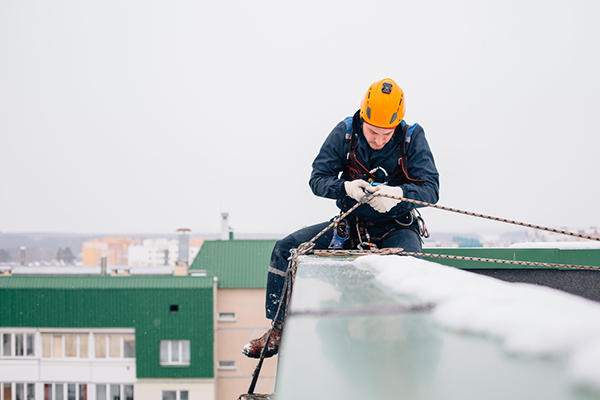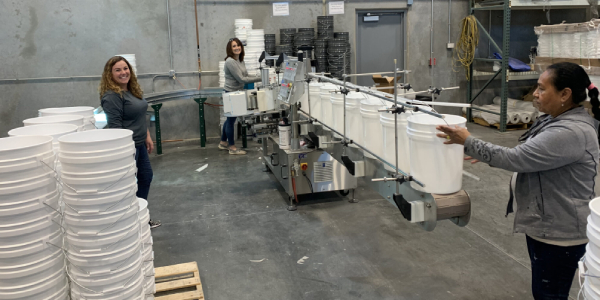Are You Prepared for an Emergency?

By John Kenney, Cotney Attorneys & Consultants.
There will be a time when an emergency occurs and your business needs to be prepared with an emergency action plan and trained workers ready to respond quickly.
This will optimize team efficiency, help relieve anxiety and could save lives.
To ensure this emergency action plan will work, there needs to be a commitment from management and worker involvement. And there needs to be training.
For roofers, falls are the leading cause of workplace injury and death. As a result, more frequently than for any other reason, the Occupational Safety and Health Administration, or OSHA, cites companies for violations in fall protection.
Make an honest assessment of your fall hazards plan to be implemented in the workplace to keep your employees safe.
You can complete a hazard assessment in a day. Its positive effects will last for years. Those effects can be measured based on the health and safety of your workers and by how many accident-free days they have on the job.
Malta Dynamics, a fall protection and safety company, offers a checklist for assessing hazards.
Among the items on the checklist are:
- Floor openings
- Protruding objects
- Trip hazards
- Slippery surfaces
- Unstable footing
- Hidden drop-offs
Know where your employees are most likely to fall, and engineer solutions to mitigate any risk. Train your employees, and equip them with PPE to avoid serious injuries.
OSHA requires that employers offer certain aspects of training to prevent falls, enabling each employee to know the proper procedures to minimize accidents.
Among OSHA training requirements are:
- Comprehensive training in the nature of falls
- The correct procedures for erecting and maintaining, disassembling and inspecting fall protection systems used at the worksite
- Use and operation of a guardrail system, personal fall arrest system, safety net system, warning line system, safety monitoring systems, controlled access zones and other protection that will be used on a job site
- The roles each employee plays in safety monitoring
- The use of mechanical equipment for the performance of roof work
- Knowing the limitations of the use of mechanical equipment
- The correct procedures for storing and handling equipment and materials and the erection of overhead protection
Explain your action plan to employees and review it regularly, especially if someone’s responsibilities change. Is your plan functioning? Ask yourself these questions:
- How do you report an emergency and account for personnel once an incident has occurred?
- Who is responsible for making decisions during an emergency?
- Has every employee been trained to know all procedures to follow if there is a fire, fall, earthquake, chemical spill or workplace violence?
- Does every employee know how to locate emergency supplies?
- Do all workers know evacuation procedures and escape routes, as well as where to reassemble for a headcount and any further instructions?
It is always a great idea to have someone on every crew trained in cardiopulmonary resuscitation (CPR) and first aid. Workers must know how to react in the event of a medical emergency, whether job-related or health-related.
Also, every worksite needs to have first aid equipment at the ready to correspond to possible work-related injuries, such as oxygen tanks, ice packs, personal protective equipment and eye wash stations.
Be sure to have emergency phone numbers on hand and clearly posted, including for 911 and medical facilities in the vicinity.
Depending on location, you might also want to include a fire extinguisher in the mix and have workers practice using it, so they know its operation and its limitations. Also, be sure to have the fire extinguishers recharged each year and tagged to indicate the recharge date.
If chemicals are used on the job site, have absorbent materials on hand that match the quantity and type of chemicals that might spill. Train workers in the proper use of safety equipment to respond to a chemical spill.
To reiterate, once your emergency action plan is put together, make sure all workers are trained, then retrained for any possible emergencies that may arise. Make sure they know all emergency procedures, first aid or rescue procedures and the location of important phone numbers and emergency response equipment.
Your emergency action plan can save lives, save your business and save you thousands of dollars in losses.
Disclaimer: The information contained in this article is for general educational information only. This information does not constitute legal advice, is not intended to constitute legal advice, nor should it be relied upon as legal advice for your specific factual pattern or situation.
John Kenney has over 45 years’ experience in the roofing industry. John started his career by working as a roofing apprentice at a family business in the Northeast to operating multiple Top 100 Roofing Contractors. As Chief Operating Officer, John is intimately familiar with all aspects of roofing production, estimating, and operations. During his tenure in the industry, John ran business units associated with delivering great workmanship and unparalleled customer service while ensuring strong net profits for his company prior to joining Cotney Consulting Group. If you would like any further information on this or another subject, you can contact John at jkenney@cotneycl.com.























Comments
Leave a Reply
Have an account? Login to leave a comment!
Sign In